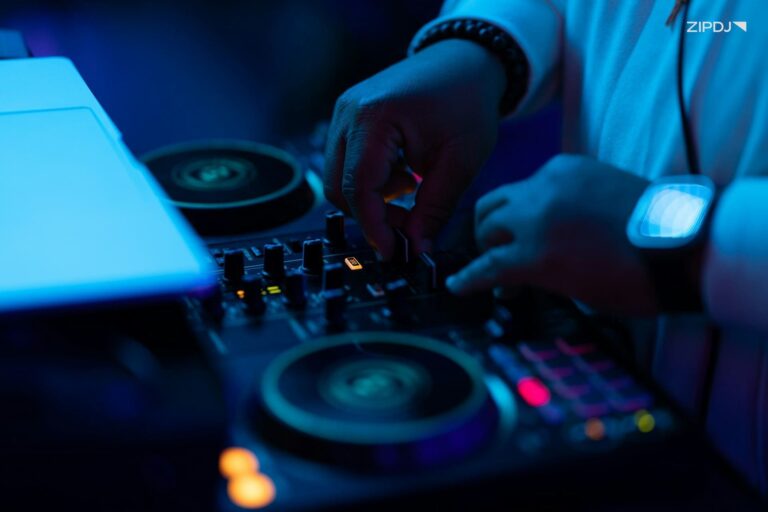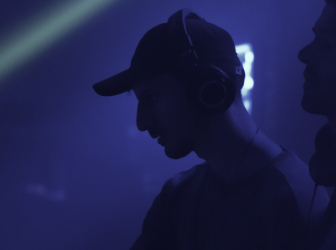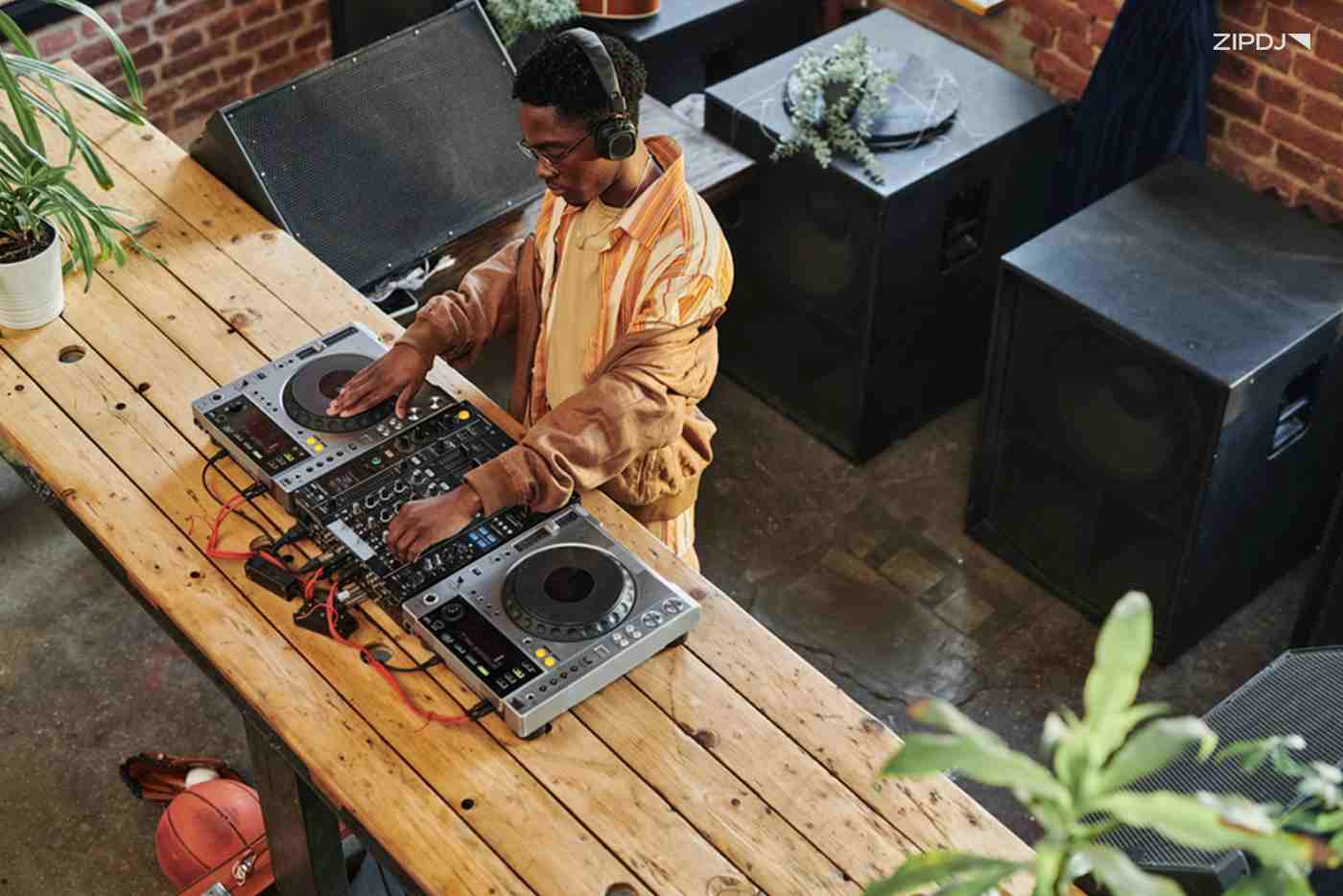The 10 Best DJ Software For Beginners In 2025 (Ranked)

Starting as a DJ can be a minefield, with endless options for DJ software on the market.
The best DJ software for beginners covers the necessary features to get started, with a shallow learning curve and affordable price.
This guide breaks down the advanced features and music library tools of the most popular DJ software for beginners.
Beginner DJ Software: Key Considerations
Before investing your time and money in new DJ software, it’s essential to research and select the best one for your needs.
Here are some of the key considerations when looking through software options for beginner DJs:
- Cost: Before researching different software features, you need to assess how much you’re willing to pay. Factor in the price of controllers, purchasing tracks, and whether the software is a subscription or a one-off payment.
- Features: While most DJ software covers the core mixing tools, you may want to future-proof your investment with other features. This could be key detection or harmonic mixing tools, so note the features you need when researching.
- User friendliness: Complete newcomers might be put off by DJing if presented with a confusing user interface. Ensure the software uses an intuitive user interface with a shallow learning curve.
- Compatible controllers: Different software is compatible with different hardware controllers, which can impact your choices. If you already have a DJ controller, check to see what software it’s compatible with.
- Library management features: If you’ve already accumulated an extensive, eclectic music library, you’ll need robust library management tools. Categories for BPM, key, genre, and others can help you quickly find tracks.
- Community and customer support: Learning the art of DJing is easier when you can ask for advice from more experienced DJs. Before investing, check to see what the online support and community are like for specific software.
You can also read user reviews and watch video tutorials online to determine whether the software is right for you.
Find out how ZIPDJ helps DJs discover exclusive tracks.
The 10 Best DJ Software For Beginners In 2025
Whether you’re a fan of EDM music or prefer drum and bass, the most popular DJ software includes everything you need for mixing.
Let’s begin this guide and break down the features, pros, and cons of the essential DJ software for newcomers:
10. WeDJ
Developed by Pioneer DJ, WeDJ is a beginner-friendly application for smartphones and tablets designed to be used with their entry-level controller.
Paired with the Pioneer DDJ-200 controller, it’s a powerful tool that introduces new DJs to many core mixing skills.
It is compatible with Android and iOS devices and includes a two-channel interface with three-band EQ and a crossfader to mix music.
You can learn DJing on the application or through a compatible controller, customizing deck views and experimenting with tempo.
Pros
- Beginner-friendly, intuitive user interface
- Great support for streaming services
- Excellent automated features for BPM and volume
- Customizable layout for user preferences
Cons
- The supported controllers are limited
- No streaming service support for Android devices
Bottom Line
If you’re looking for an excellent and highly affordable application to learn how to mix songs, Pioneer DJ’s WeDJ is a great entry point.
While non-Pioneer DJ equipment lacks compatibility, those investing in the brand will get plenty of use from WeDJ.
9. Engine DJ
DJs looking to manage extensive music libraries frequently turn to Engine DJ to organize tracks across multiple genres.
It’s easy to set up and offers a broad range of tools for cataloging music inventories and preparing them for specific sets.
If you’re DJing at a party, you can create tags for closing songs and other key tracks and integrate them into Rekordbox DJ.
While Engine DJ is mainly used for preparation, it can also be used for mixing songs using dedicated hardware.
Pros
- Impressive user-friendly design and interface
- Extensive library management tools
- Live DJing features with Engine-powered hardware
- Plenty of music import options
Cons
- Some issues exporting through SoundSwitch
- Limited functionality for DJing techniques
Bottom Line
Managing large libraries of tracks can be a headache, but Engine DJ’s robust tools make it easy to find a song’s BPM and search for other parameters.
If you’re using compatible controllers from Denon, Engine DJ’s mixing tools make it a good starting point for newcomers to DJing.
8. Cross DJ
Another excellent option for beginner DJs looking for a mobile and desktop application is Cross DJ, which comes packed with features.
Basic mixing skills, such as beat matching, key detection, and loop controls, are all available, with plenty of effects to apply.
Other features that DJs use include manual loop controls and a sampler, with customization options to refine the process.
Compatible with Android and iOS, Cross DJ packs enough tools with impressive sound quality for beginners and experienced DJs.
Pros
- Intuitive mixing with beatgrid editing
- Robust capabilities for MIDI mapping
- Ability to record mixes within the application
- Accurate BPM detection and diverse effects
Cons
- Lacks mapping support for some controller models
- The Android version lacks a split cueing feature
Bottom Line
Cross DJ’s impressive mixing tool suite, built-in sampler, and range of effects give it plenty of longevity for new DJs.
Once you’ve mastered the basics, you can upgrade to Cross DJ Pro, use it with a digital audio workstation, and learn production.
7. Mixxx
Newcomers looking for free DJ software have several options, but Mixxx is widely acclaimed for its features and accessibility.
Mixxx comes with everything you need to DJ a house party, with four decks to play with and a wealth of beginner and advanced features.
You can apply FX chaining, practice harmonic mixing with key detection, and even inspect the RGB waveforms for technical insights.
Everything is presented through a straightforward user interface, with beat grids and waveforms to help line up and transition between tracks.
Mixxx also supports plenty of controller maps and soundcards, ensuring functionality on most beginner DJ setups.
Pros
- Completely free and open-source DJ software
- Impressive selection of DJing tools
- Online learning tools and community support
- Excellent customization and modification options
Cons
- Some user reports of audio performance issues
- MIDI mapping can be tricky to set up
Bottom Line
While Rekordbox DJ, Serato DJ Pro, and Traktor Pro are widely known, Mixxx is a highly underrated software option that shouldn’t be overlooked.
As free software, it packs a real punch, with instant access to a huge range of tools and highly customizable options for professionals.
Recommended reading: The 10 best DJ tutorials for beginners in 2025.
6. Djay Pro
There are many options for DJ software for Mac and Windows, with Algoriddim’s Djay Pro becoming increasingly popular among DJs.
The software includes Apple Music integration, with access to millions of tracks and the user’s personal library.
The mixing tools available with Djay Pro are extensive, with high-end tools for real-time vocal and instrumental separation using Neural Mix.
Djay Pro’s interface is clean and well-presented. It features a classic turntable and mixer setup to help new DJs manage their sets.
Advanced features, such as the Fluid Beatgrid and Crossfader Fusion, expand the options for impressive and seamless transitions.
Pros
- Robust compatibility with Soundcloud, Apple Music, and TIDAL
- Impressive selection of sound effects
- Plenty of professional DJ mixing features
- iPad video mixing and DJing mode
Cons
- Issues syncing playlists across devices
- Paid version required for performance features
Bottom Line
While the free version is ideal for casual users and beginners, Djay Pro packs plenty of unique features for those on a tight budget.
Once you master the basics, upgrade to the full version and experiment with the mixing tools pro DJs use.
5. Virtual DJ
Packed with advanced technology and beginner and professional-level features, Virtual DJ has been making waves in the industry.
Real-time mixing tools ranging from nuanced EQing to stem separation open up creative opportunities and techniques.
Virtual DJ includes instant acapella and instrumental separation for stem mixing, as well as the tools to create on-the-fly mashups.
There are many options for seamless transitions, and Virtual DJ also works with many professional DJ controllers.
Pros
- Wide compatibility options for DJ hardware
- Extensive feature set and stems
- Doesn’t require a powerful computer to run
- Free version available for home DJing
Cons
- A steeper learning curve than other DJ software
- A professional license is required for gigging DJs
Bottom Line
With advanced DJ technology and intuitive features for beginners, it’s no surprise that Virtual DJ has grown in popularity.
While the advanced tools might be daunting, plenty of DJ mixing tips online can help newcomers master Virtual DJ’s features.
4. Traktor Pro 3
Native Instruments’ Traktor Pro 3 is widely used by professional DJs looking for high-performance mixing capabilities.
It’s also a solid entry point for DJs invested in the brand’s Kontrol S4 MK3, S3, and S2 MK3 controllers, with MIDI mapping also available.
It is packed with cutting-edge DJ tools for seamless transitions, including hot cues, seamless looping, beat jumps, and a mixer FX unit.
The Elastique 3 Engine allows DJs to access impressive time-stretching tools that improve audio quality and performance.
Pros
- Comprehensive range of core features
- Pattern Player for layering samples
- Impressive mixing with Ozone Maximizer
- Compatible with a range of audio interfaces
Cons
- The user interface could be improved
- Lacks the stem separation of competitors
Bottom Line
With many powerful features for beginner and professional DJs to explore, Traktor Pro 3 remains a strong contender in the software market.
While it lacks some advanced tools, such as stem separation, there’s more than enough here to keep beginners occupied for years.
3. DJ.Studio
DJ.Studio represents a different approach to DJing for beginners, allowing them to learn skills that can be applied when performing live.
Blending elements of a DAW, it’s ideal for bedroom DJs looking to create pre-made mixes and focus on impressive transitions.
There’s timeline mixing and stem separation, integrated sampling, and a smooth editor that illustrates your tracks’ characteristics.
It’s not designed for live performances, but this approach streamlines the learning curve for creating mixes in advance.
Pros
- Exceptionally streamlined workflow
- Extensive range of transition editing options
- Compatible with most libraries and DJ software
- Seamless import and export options
Cons
- Focuses on mix creation rather than live performance
- Lacks functionality for scratch DJs
Bottom Line
DJ.Studio’s precise approach to preparing mixes outside of a live setting makes it excellent for learning the art form at your own pace.
The skills and features it offers can be easily transferred to other DJ software, and it’s easy to share pre-recorded mixes online.
See what’s included with every ZIPDJ subscription.
2. Serato DJ Lite
Like Traktor, Serato DJ Pro is well established in the DJing community, with the Serato DJ Lite version offering entry-level access to the platform.
This free version has been designed to make learning skills like beat mixing and scratching your favorite tracks easy.
Serato DJ Lite offers enough to set up a wedding DJ business and play local gigs with a compatible DJ controller.
There’s also stem separation, instant access to streaming platforms, and the option to live stream your sets.
Pros
- Designed exclusively for beginner DJs
- Incredibly easy-to-use interface and workflow
- Live streaming capabilities
- Includes Serato Stems for vocal and instrument isolation
Cons
- Limited controller compatibility
- Lacking in advanced features
Bottom Line
Serato DJ Lite sets out to provide an easy platform for newcomers, and it delivers on this promise with an intuitive workflow.
Upgrade to Serato DJ Pro, and you’ll have access to controllers and advanced features to enhance your DJing skills.
1. Rekordbox
With Pioneer DJ controllers typically used in most clubs, Rekordbox has become one of the most popular software options.
It has deep library management features, comprehensive mixing tools, and AI-powered track analysis.
Rekordbox also includes DVS control and video output for live VJing events, delivering a seamless DJing workflow.
There’s also support for Apple Music, with various monthly subscription options to expand features and cloud storage space.
Pros
- Full integration with Pioneer DJ equipment
- User-friendly interface and learning curve
- Robust Cloud Sync for music libraries
- Streaming integration with TIDAL, Apple Music, and more
Cons
- Subscription only – no one-off purchase option
- Offline functionality is limited
Bottom Line
Widely used by the best club DJs, Pioneer’s Rekordbox covers everything you need and allows you to upgrade over time.
The brand continues to update the platform with new features, adding to its long-term value for aspiring DJs.
Summary
Choosing appropriate DJ software is essential for beginners looking to learn the ropes and begin their DJ journey.
By researching the DJ software in this guide, you can access the core features and tools needed to perform impressive DJ sets.
As your skill level increases, upgrade to professional DJ software with advanced features and expand your DJ career.
Not a member ?
Join Today for Unlimited Music Downloads. Visit zipdj.com for more information.


